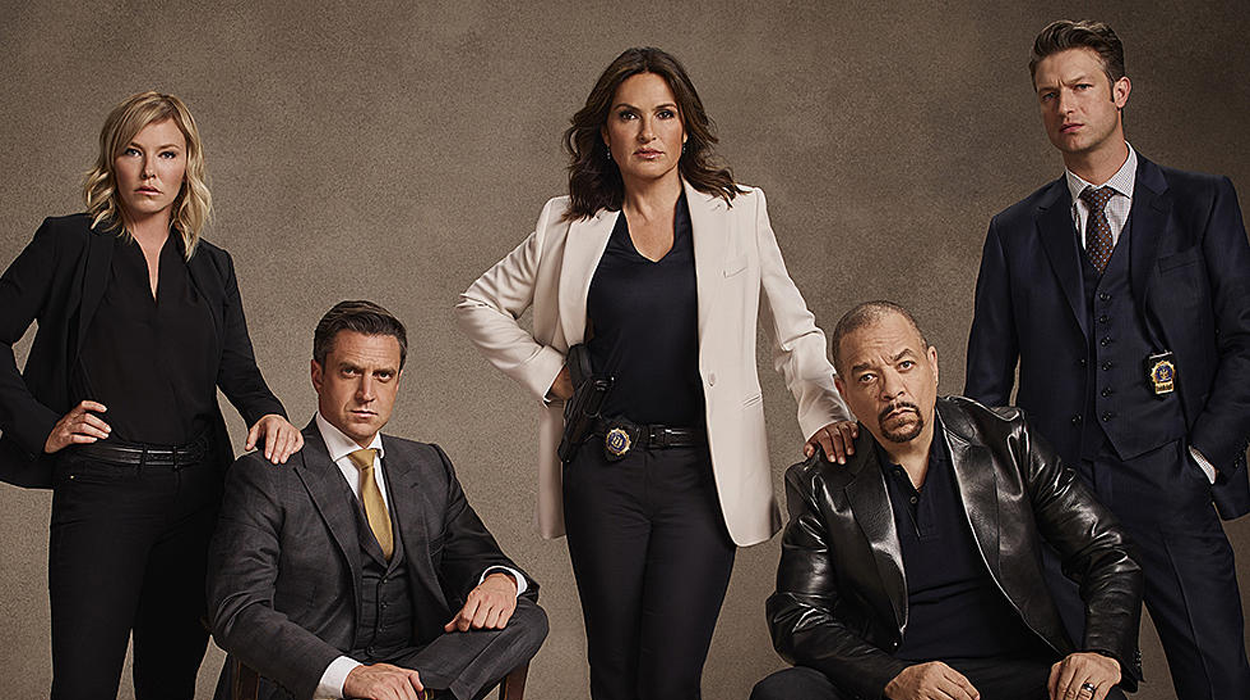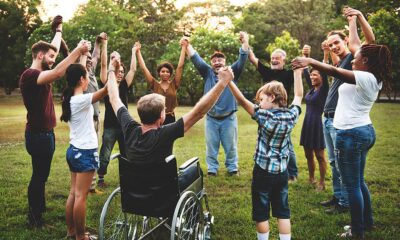LAW
The Iconic Cast of Law & Order: Exploring the Faces Behind the Crime Drama Legacy

For over three decades, Law & Order has captivated television audiences worldwide with gripping crime stories, courtroom drama, and morally complex characters. But beyond its compelling narratives, one of the primary reasons why Law & Order continues to stand as a pillar of televised entertainment is its remarkable cast. Both its long-standing stars and memorable guest appearances have elevated this show into an enduring television phenomenon.
This post dives into the talented actors who have graced our screens in Law & Order—from the iconic original cast members to those who took the baton in spinoff series. We’ll also explore how the cast of Law & Order shaped the unique DNA of the series and left a mark on their audiences—and their careers.
The Original Powerhouse Cast of Law & Order
When Law & Order first aired in 1990, it quickly established itself as a different breed of legal drama. The unique structure of the series, splitting screen time between criminal investigations and courtroom proceedings, demanded a versatile ensemble cast.
Steven Hill as Adam Schiff
Steven Hill played the no-nonsense District Attorney Adam Schiff, a character loosely inspired by real-life Manhattan District Attorney Robert Morgenthau. Hill’s calm yet commanding presence became a centerpiece for the legal aspect of the show. His wise, albeit sometimes cynical, delivery of justice embodied the series’ ethical quandaries. Hill remained a steady figure on the show for ten seasons until his departure in 2000.
Jerry Orbach as Lennie Briscoe
Detective Lennie Briscoe, played by Jerry Orbach, remains one of the most beloved characters in television history. Known for his dry wit and razor-sharp one-liners, Briscoe’s character gave the series a much-needed dose of humanity and humor amid the gritty backdrop of New York crime. An original Broadway star turned television icon, Orbach remained a staple of the show for 12 seasons, cementing his reputation as one of the most enduring and recognizable stars of the Law & Order franchise.
Chris Noth as Mike Logan
Chris Noth’s performance as Detective Mike Logan gave the show a more emotionally raw and passionate edge. Logan’s pursuit of justice often teetered on the line between personal conviction and professional duty. Noth’s charismatic portrayal set the tone for future evolving crime-fighting leads and eventually earned his character a feature role in the spinoff Law & Order: Criminal Intent.
Michael Moriarty as Ben Stone
Assistant District Attorney Ben Stone, played by Michael Moriarty, became the moral compass of Law & Order during the early seasons. Stone’s character routinely tackled thorny ethical issues, bringing a gravitas that set the legal sequences apart from other dramas of its time. Moriarty left the show in 1994 but remains a significant contributor to the franchise’s indelible early years.
Richard Brooks and Dann Florek
Richard Brooks played ADA Paul Robinette, notable for being one of the first cast members to explore systemic inequality in law enforcement. His perspective as a Black ADA often led to compelling and thought-provoking storylines. Meanwhile, Dann Florek’s Captain Donald Cragen provided leadership and stability for Law & Order’s investigative team. Florek would later reprise his role in Law & Order: Special Victims Unit (SVU).
The Cast Evolution in Law & Order Spinoffs
With the massive popularity of Law & Order, it wasn’t long before Dick Wolf, the creator of the show, launched numerous spinoffs. From Law & Order: Special Victims Unit (SVU) to Law & Order: Criminal Intent and beyond, these spinoffs introduced new faces and storylines but were heavily rooted in the tone and success of the original series.
Mariska Hargitay as Olivia Benson (SVU)
One of television’s most iconic performances, Mariska Hargitay’s portrayal of Detective (and later Captain) Olivia Benson transformed the SVU spinoff into a powerhouse in its own right. Benson’s fierce determination, vulnerability, and empathy as a leader resonated with viewers, contributing significantly to the spinoff’s record-breaking success. Hargitay has also broken records by portraying Benson for over two decades—making her one of the longest-running characters in prime-time history.
Christopher Meloni as Elliot Stabler (SVU and Organized Crime)
Christopher Meloni needs little introduction. His portrayal of the intense, often morally conflicted Detective Elliot Stabler earned him legions of fans during his tenure on SVU. After leaving the series in 2011, Meloni returned to the franchise in his spinoff Law & Order: Organized Crime in 2021, delighting fans worldwide with his comeback.
Vincent D’Onofrio as Detective Goren (Criminal Intent)
Vincent D’Onofrio’s Detective Robert Goren, part of Criminal Intent’s investigative team, brought a fresh perspective to the franchise. Unlike his counterparts, Goren was deeply psychological in his approach to solving crimes, often unraveling criminal motives through intellect rather than brute force. D’Onofrio’s nuanced performance elevated Criminal Intent to critical acclaim.
Additional Standouts Across the Franchise
- Sam Waterston as Jack McCoy (Original Series)
One of the longest-serving stars in the franchise, Waterston remains synonymous with Law & Order. His portrayal of Jack McCoy, a driven ADA-turned-District Attorney, brought both ferocity and heart to the courtroom.
- S. Epatha Merkerson as Anita Van Buren (Original Series)
Merkerson’s role as Lieutenant Anita Van Buren made Law & Order something special. Her authoritative yet compassionate leadership paved the way for more balanced gender representation in police roles.
- Kathryn Erbe (Criminal Intent), Ice-T (SVU), Kelli Giddish (SVU)
These actors introduced dynamic characters whose complexity and relatability kept viewers invested while exploring new facets of justice in spinoff storylines.
Impactful Guest Stars Over the Years
Law & Order became almost legendary for casting noteworthy guest stars, many of whom later gained mainstream acclaim. Did you know that the likes of Julia Roberts, Idris Elba, and Jennifer Garner all made appearances on the show? The series also gave opportunities to theater actors in New York, further emphasizing its ties to authentic storytelling.
The Legacy of the Law & Order Cast
The cast of Law & Order—both the original trailblazers and those in spinoffs—have left an indelible mark on fans, fellow actors, and television history. This series offered a unique platform for portraying multifaceted justice while introducing audiences to characters that felt real and relatable.
Final Thought
With a legacy spanning over 30 years, Law & Order is more than just a show—it’s an institution. Its cast, both past and present, is a reflection of why it continues to resonate across generations.
LAW
The Rise of Bebasinindo More Than Just a Trend – It’s a Lifestyle

Language evolves with society—and sometimes, a single word becomes a whole movement. That’s exactly what Bebasinindo is turning into. But what is this trending term, and why is everyone suddenly using it? Let’s dive into the world of Bebasinindo, where language meets culture, freedom, and identity. Bebasinindo is a newly coined term that blends “bebas” (meaning “free” in Indonesian) with “inindo”, a suffix that hints at something uniquely Indonesian. Together, the word represents freedom of expression, individuality, and unfiltered creativity—all in an Indonesian context. It’s more than slang. It’s a mindset.
Why Is Bebasinindo Gaining Attention?
Bebasinindo is gaining massive attention because it speaks directly to a new generation that values freedom, authenticity, and self-expression. In a society that often emphasizes conformity and tradition, this term offers a refreshing sense of rebellion and individuality. It’s easy to say, fun to use, and loaded with meaning—making it perfect for viral content. Social media platforms have supercharged its reach, turning it into a cultural badge for those who want to be bold and unapologetically themselves. Simply put, Bebasinindo captures the spirit of modern Indonesia in just one word.
Historical and Cultural Roots
There’s no official dictionary that contains Bebasinindo—yet. The word grew from a blend of grassroots youth culture and online conversations. Many trace its roots back to Indonesian Gen Z forums, where bebas became a rallying cry. Traditionally, Indonesian society values politeness, harmony, and conformity. Bebasinindo breaks that mold. It’s the new rebellion—one that happens through memes, voice notes, and TikTok captions instead of protest signs.
Bebasinindo in Popular Culture
Platforms like Twitter (X), TikTok, and Instagram Stories catapulted Bebasinindo into viral status. Hashtags like #bebasinindo now feature skits, debates, poetry, and even song lyrics that celebrate free speech and open expression. Indonesian youth are savvy linguists. They’ve taken Bebasinindo and twisted it into:
- Bebasin aja (Just be free)
- Bebas banget inindo style (Super free, Indonesian-style)
It’s like the new YOLO—only more culturally rooted.
Bebasinindo in Different Regions
Even though the term started in Java, it’s spreading like wildfire across Sumatra, Bali, Sulawesi, and beyond. Jakarta, the cultural trendsetter, is the epicenter of Bebasinindo’s usage. Street art, spoken word nights, and indie brands all embrace it. In urban settings, Bebasinindo means open expression. In rural areas, it’s taken more cautiously—interpreted as a call for independence within social limits.
Social and Psychological Impacts
Bebasinindo is about owning your identity—language as a badge of who you are. It’s informal, bold, and 100% homegrown. Think of Bebasinindo as verbal graffiti—it reflects the collective mood of a younger, bolder, more outspoken generation. From memes to GIFs to short videos, #bebasinindo is now a cultural tag for content that feels authentic, rebellious, and hilarious. Bloggers, streamers, and podcasters are hopping on the Bebasinindo trend to build loyal communities. It’s content with soul.
Educational Perspectives
Unofficially, yes. Students use it among peers, especially in creative assignments or discussions around culture and identity. Teachers are recognizing that Bebasinindo reflects real language evolution, and some progressive educators are using it to teach media literacy.Some conservative figures argue that Bebasinindo promotes recklessness and disrespect for tradition. They see it as a linguistic rebellion. This clash has sparked debates on whether Bebasinindo corrupts or refreshes the Indonesian language.
The Business Side of Bebasinindo
Brands are jumping on the Bebasinindo trend to connect with younger, more expressive audiences. From fashion labels to coffee shops, businesses are using the word in slogans and campaigns that promote creativity and freedom. It adds a cool, relatable vibe that speaks directly to Gen Z and Millennials. Limited-edition merch, bold packaging, and social media ads now feature Bebasinindo-inspired messaging. It’s not just slang—it’s smart marketing with cultural impact.
Future of Bebasinindo
Bebasinindo is still in its honeymoon phase, but its deep cultural resonance suggests it might stick around—especially if it keeps evolving. By 2030, Bebasinindo might be a recognized sociolinguistic movement. It could even enter textbooks or be analyzed in universities.
- “Gue lagi pengen bebaskan pikiran, bro.” (I just wanna free my mind, bro.)
- “Style gue? Bebasinindo banget!” (My style? Totally Bebasinindo!)
Avoid it in formal documents, academic writing, or job interviews—unless the company is super progressive.
Bebasinindo vs Similar Movements
Bebasinindo shares similarities with global expressions like YOLO, “stay woke,” or “keep it real,” but with a uniquely Indonesian twist. While those movements emphasize self-awareness and freedom, Bebasinindo blends that spirit with local culture and language. It’s not just about living freely—it’s about doing it the Indonesian way. Unlike fleeting trends, it carries cultural weight and national identity. That’s what sets Bebasinindo apart from its global counterparts.
Conclusion
Bebasinindo isn’t just a trendy term—it’s a cultural pulse. It speaks volumes about how Indonesia’s youth want to talk, live, and be heard. It’s raw, real, and refreshingly human. Whether it ends up in dictionaries or just lives in hashtags, Bebasinindo is a symbol of freedom with flavor.
LAW
The Role of Bail Bonds in the Justice System

What Are Bail Bonds?
Bail bonds are simple and profound, operating as a pivotal mechanism within the justice system. A bail bond is essentially a contract established by a bail bond company for defendants, allowing them to be released provisionally from jail while awaiting trial.
This system is vital because it respects the presumption of innocence principle by allowing defendants to maintain their liberty until proven guilty. In Susquehanna County bail bonds exemplify this balance. As prisons grapple with overcrowding, bail bonds offer an alternative to pre-trial detention, allowing individuals to remain part of their communities, continue working, and support their families while ongoing legal proceedings are pending.
Why Bail Bonds Matter
Bail bonds extend their value beyond logistical solutions, serving essential societal and economic functions. At their core, bail bonds offer defendants the priceless commodity of time to prepare their defense, consult with attorneys, and stabilize their personal lives. This preparation can lead to fairer trial outcomes. Economically, the bail bond system saves taxpayers money by reducing the need for extensive pre-trial detention infrastructure. The social dimensions of bail are complex and far-reaching, as highlighted in this economic analysis by NPR. Facilitating defendants’ ability to maintain employment and familial bonds, bail bonds reinforce social structures and enhance community cohesion during potentially destabilizing times.
How the Bail Bonds Process Works
The bail bond process consists of several crucial steps and understanding them is key to appreciating this system. Initially, a judge sets bail during an arraignment, considering the severity of the offense, the defendant’s prior record, and their potential flight risk. This amount can often be unaffordable. At this stage, a bail bondsman comes into play, charging a non-refundable fee, typically around 10% of the total bail amount. According to Investopedia, a bail bond is a monetary assurance the bondsman offers to the court, ensuring the defendant attends all necessary court appearances.
Upon payment, the bondsman takes on the responsibility of this guarantee, facilitating the defendant’s release and allowing life to resume while court proceedings unfold. Such arrangements can be elaborate and tailored, with some jurisdictions requiring collateral beyond the fee to mitigate risk.
Challenges in the Bail Bonds System
Despite its necessity, the bail bonds system is fraught with challenges. Critics argue that it disproportionately affects the economically disadvantaged, as those unable to afford bail, even with a bondsman’s help, remain incarcerated. This stark reality contrasts with the notion of equality before the law. Furthermore, systemic abuses sometimes occur, with inflated bail amounts that compel innocent defendants to accept plea bargains.
Debunking Common Misconceptions
Many misconceptions cloud the public understanding of bail bonds. For example, the belief that bail is set arbitrarily is widespread yet untrue. Bail considerations are based on criteria including public safety and risk of flight. Additionally, some perceive the bail bond industry as predatory. While abuses exist, these narratives overlook the system’s protective measures and ethical bondsmen who serve with integrity. It’s crucial for public discourse to focus on factual elements, addressing legitimate concerns while recognizing the indispensable function that bail bonds fill in the legal system.
Proposed Reforms and Improvements
Addressing the system’s shortcomings necessitates comprehensive reform proposals. Advocates are calling for changes that could make bail more just and equitable. One promising initiative is the implementation of risk assessment tools to better gauge defendants’ likelihood of fleeing versus their financial worth. Another proposal is to enhance judicial discretion by empowering judges with alternatives to traditional bail in zero-tolerance cases. Reform efforts aim to craft a more balanced system that maintains public safety while reducing unnecessary pre-trial detention.
Real-Life Cases and Their Lessons
Real-life narratives of defendants navigating the bail system are revealing and educational. They shed light on both procedural successes and the hardships those entangled in legal proceedings face. For instance, cases, where defendants secured bail, demonstrate how financial liberation aided in achieving favorable trial outcomes. Conversely, stories of those unable to post bail, resulting in detention, illustrate the profound impact of economic inequality on the delivery of justice. Analyzing these stories offers valuable insights for policy considerations and highlights the human aspect of legal processes.
The Future of Bail Bonds in the Justice System
The ongoing evolution of bail bonds will shape the future of the justice system. Governments and legal bodies are reevaluating their approach to pre-trial processes, and bail systems may integrate more technology-driven evaluations and reforms to enhance transparency and fairness. Future directions include expanding electronic monitoring options and diversifying release conditions beyond monetary bail, reflecting a justice system committed to reform and equity. The journey hinges on striking a balance between the ideals of safety, fairness, and liberty, ultimately striving for a more just and humane legal framework.
LAW
What to Do After a Personal Accident: A Step-by-Step Guide

Introduction
Experiencing a personal accident can be confusing and stressful. Whether it’s a car accident, slip-and-fall, or workplace mishap, it’s critical to know what to do right away to protect your health and rights. This guide provides a positive approach to handling the aftermath of an accident, with a step-by-step process designed to ensure you move forward in the best possible way.
Step 1: Ensure Safety and Seek Medical Attention
Immediately after an accident, your priority should be your safety, and the safety of others involved. If possible, move away from any potential onsite hazards. Once you’ve ensured your immediate safety, seek medical attention, even if you don’t think your injuries are severe. Medical documentation ensures you receive appropriate treatment and serves as crucial evidence if you decide to pursue a legal claim.
Step 2: Document the Scene
Once safety and medical needs have been addressed, it’s essential to document the accident scene. Take photographs of the area, vehicles or objects, and visible injuries. Ask witnesses for their contact information because their testimony can be invaluable. Writing down your memories of events while they’re still fresh is also beneficial.
Step 3: Consult with a Personal Accident Lawyer
After ensuring safety and documenting evidence, consulting a legal professional is a brilliant next step. A personal accident lawyer Jersey City NJ, can provide valuable guidance tailored to your situation. Attorneys can negotiate with insurance companies, guide you through complicated legal processes, and ensure you get paid what you are due. Their knowledge can be invaluable when there are serious injuries or disagreements over who is at fault.
Step 4: Notify Your Insurance Company
It’s critical to notify your insurance provider as soon as possible. Please give them the accident’s specifics, but use caution when making recorded comments without consulting a lawyer. It’s advisable to hold off on making in-depth remarks until after speaking with your attorney because insurance companies may attempt to reduce their payouts.
Step 5: Keep Records and Manage Follow-ups
Keep thorough records of all accident-related medical procedures, costs, and communications. Save copies of your medical bills, repair estimates, and other documents about time off work or lifestyle adjustments brought on by injuries. Consistent follow-up with your lawyer and healthcare providers is crucial to ensure you’re legally and medically on track.
Step 6: Understand the Legal Process
Familiarize yourself with the legal process concerning personal accident claims. You may control expectations and make wise decisions by knowing deadlines, potential outcomes, and settlement negotiations. Your lawyer will guide you through this process, offering insights that ensure your rights are protected, and you’re compensated fairly for your losses.
Conclusion
A personal accident can be daunting, but understanding what to do afterward can ease the burden. You can navigate the aftermath effectively by prioritizing safety, seeking prompt medical and legal assistance, and staying organized. Remember that your actions might substantially impact your recuperation and the defense of your legal rights shortly after an accident. With determination and the proper support, you can move forward positively and with peace of mind.
-

 NEWS3 weeks ago
NEWS3 weeks agoWhat is www.avstarnews.com and What Does It Offer?
-

 TECHNOLOGY5 months ago
TECHNOLOGY5 months agoGomyfinance Invest: Simplify Your Path to Financial Growth
-

 TECHNOLOGY3 weeks ago
TECHNOLOGY3 weeks agoAtfboru: A Creative Platform for Designers, Artists, and Entrepreneurs
-

 BUSINESS3 weeks ago
BUSINESS3 weeks ago.Ydesi: Exploring Its Significance and Applications
-

 CRYPTO4 months ago
CRYPTO4 months agoCrypto30x.com Gemini: Revolutionize Your Crypto Trading Experience
-

 NEWS12 months ago
NEWS12 months agoDogo News: The Latest Trends in the World of Dogo Argentino
-

 EDUCATION11 months ago
EDUCATION11 months agothe christian between the gospel and society
-

 HEALTH1 year ago
HEALTH1 year agoEmmyhii777: Unlocking the Power of Positive Social Connections
